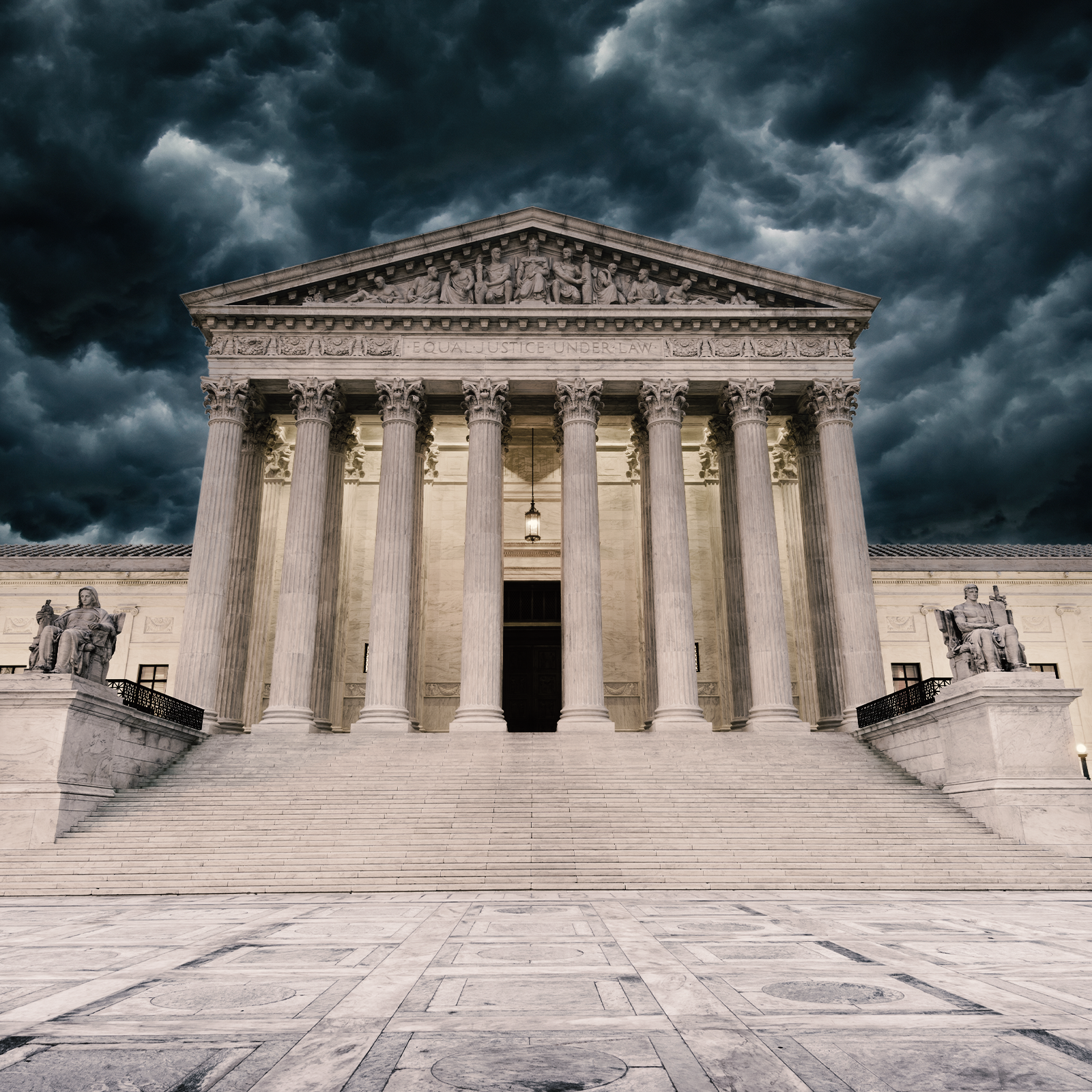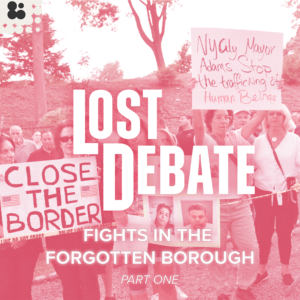This article originally appeared on our substack
As the Supreme Court nears the end of this term and issues a flurry of opinions, we want to point you to a few important looming decisions. We’ve extensively covered the coming decision on abortion rights in Dobbs, both in this newsletter and on our show, but it’s not the only Supreme Court decision that could have sweeping consequences for our country. Here are three additional cases whose outcomes may upend established law.
Carson v. Makin
This dispute involves a Maine program that offers tuition assistance for students to attend private high schools when they live in an area without a public option. At issue are two families who were denied funding because they planned to use it to pay for Christian schools that offered religious instruction. Maine law limits tuition payments to nonsectarian institutions.
This case comes on the heels of the 2020 case of Espinoza v. Montana Dept. of Revenue, in which the court ruled 5–4 that a similar voucher program could not exclude religious institutions simply because they were religious. In the lower court ruling in Carson, the First Circuit sided with Maine and interpreted Espinoza to mean a state can’t exclude a school simply because of their denomination, but they can exclude a school if the funding would go towards teaching religion. In short, the First Circuit is distinguishing between restrictions based on “religious status” and “religious use.” Restrictions based on the former are unconstitutional; those based on the latter are not.
The parents in Carson argue that there’s no constitutional basis for the First Circuit’s distinction. Here’s SCOTUSblog summarizing the parents’ position:
Indeed, they suggest, the framers of the Constitution opted to protect religious “exercise,” rather than “mere belief or conscience, to ensure that Americans would be free to live out their faith.” And for these parents and others who would use the tuition-assistance program, they explain, ensuring that their children receive a religious education is a religious obligation; barring them from participating in the tuition-assistance program because the funds would be used for religious purposes discriminates “not only against that religious use, but also against the religious status that impels it.”John Doe
Maine, on the other hand, says their program is unique in that it intends to replicate a public education where a regular public school is not feasible. They argue that a public education “should be a nonsectarian one that exposes children to diverse viewpoints, promotes tolerance and acceptance, teaches academic subjects in a religiously neutral manner, and does not promote a particular faith or belief system.” They want to ensure “every child has access to a free public education—i.e., a religiously-neutral education where subject matter is not taught through the lens of any particular faith.” They distinguish this program from other school voucher programs that provide money to families “who for academic, religious, athletic, or other reasons want to opt out of the public education system, and send their children to private schools.” They argue that their law doesn’t involve a choice to leave the public school system but a narrow circumstance in which no public school is available.
The stakes in this case are enormous. As the National School Boards Association argued in a brief supporting Maine, the elimination of the distinction between religion status and religious use would force states to either dramatically expand voucher and school choice programs (the likely path in red states) or to shut them completely (the likely outcome in blue and purple states, including Maine). Put simply: this is the most important school choice case in recent memory.
My take: I side with Maine here. The families involved are not being denied a “generally available public benefit.” There is no general right to attend a Christian school at state expense in Maine, but there is such a right to a public education. This is a narrow situation in which the state is trying to find the closest approximation to a public school where none is available. It’s also worth noting that the facts for the parents here aren’t flattering. The state alleges that the two schools at issue “will not hire LGBTQ teachers or admit LGBTQ students.” It would be odd to require the government to fund educational institutions with those practices.
My prediction: the court seems poised to rule in favor of the parents. Amy Howe has a telling readout of the oral arguments, and even Chief Justice Roberts seems inclined to strike down the Maine law.
New York State Rifle & Pistol Association Inc. v. Bruen
For the first time in 11 years, the Supreme Court has taken on a Second Amendment case. The case involves New York State’s concealed carry permitting process, which requires anyone who wants a license to prove to authorities that they have “proper cause” for carrying the weapon. Openly carrying a handgun is completely illegal. The petitioners are two men whose applications were rejected because the licensing officer determined they did not have exceptional cases for self-defense that would distinguish them from the general public. The district court dismissed their claims, and the U.S. Court of Appeals for the Second Circuit affirmed the lower ruling.
It’s important to note that there are two different types of requirements a state can impose for licenses: objective and subjective. Objective requirements, which are generally on safer legal ground, can include restrictions on age, criminal history, and citizenship. This case involves subjective requirements, which place much greater discretion and power in the licensing authority. In this case, that discretion involves the decisions over what constitutes a sufficiently heightened need for self-defense. The New York State Rifle & Pistol Association (NYSRPA) argues that licensing officers are incredibly strict and stingy with their interpretation of what constitutes a need for self-defense for the general public but are generous with permits for celebrities and the well-connected.
In support of NYSRPA, 26 states argue that non-discretionary concealed carry laws (“shall issue” laws) reduce violent crime. As evidence, they pointed to Arizona’s murder rate, which dropped significantly in the 20+ years after the state passed a “shall issue” concealed carry law. On the other side of the debate is a coalition of cities who argue that discretionary permits are a critical tool to combat street violence. The National Coalition Against Domestic Violence also weighed in, arguing that “shall issue” permits increase the risk of domestic violence. They claim the presence of a firearm often increases the frequency of deadly incidents of abuse.
My take: it’s no secret that the rich and powerful can buy concealed carry permits (usually for their bodyguards) in New York, while it’s next to impossible for anyone else to get one. That’s not fair. At the same time, I don’t want New York City to turn into a densely populated Wild West town, with millions of armed people packed together in close proximity. The state should reform the policy so that the hyperconnected don’t game the system, but anything they’d do to fix the law would likely be too little and too late for this court.
My prediction: The court is almost certain to side with the petitioners and strike down this law. In the 2008 case of District of Columbia v. Heller, a much less conservative court argued that “all Americans” have the right to “possess and carry weapons in case of confrontation.” That ruling was considerably more narrow than this one (it involved a blanket ban on handguns and required any firearm kept in the home to be unloaded and disassembled), but everything I know about this court tells me they will take a sweeping view of the Second Amendment.
Kennedy v. Bremerton School District
This is a case we covered on The Lost Debate Show back in April. It involves a high school football coach who engaged in a number of prayer rituals during and around his official duties. As we covered on the show, there is significant disagreement over many of the facts in this case, but what is undisputed is that the coach would kneel at the 50-yard line after games and pray. Sometimes students would join him for those prayers, and in later instances, he did so alone.
After a series of exchanges between the coach and school officials, the coach was warned to keep his religious activities “physically separate from any student activity.” He defiantly launched a press tour and announced he would resume praying at midfield before the school placed him on administrative leave. The district then decided not to renew his contract. Perhaps crucially, in his final few games, he was not joined by any students when praying at midfield. The coach eventually became a bit of a political celebrity, appearing at a 2016 Trump rally.
What makes this case particularly interesting is that it pits the coach’s right to the free exercise of his faith against the Constitution’s prohibition of government endorsement of religion. To make matters more complicated, the court has applied at least two different tests when interpreting the First Amendment ban on “an establishment of religion.” The most restrictive test, called the Endorsement Test, prohibits the government (including any official—i.e., potentially this coach—in their official duty) from endorsing a particular religion or religious belief. The more permissive test is called the Coercion Test, which, as the name suggests, only outlaws actions that would be seen to coerce someone into religious exercise. Under the Coercion Test, an official could endorse a religion or belief; they just wouldn’t be able to compel someone to engage in a religious activity.
Given this is a conservative court, the justices are almost certain to apply the Coercion Test. So the question becomes: Could players and other students feel compelled to participate in the coach’s prayer rituals? At least one player anonymously reported joining the ritual for fear of losing playing time.
My take: this one is a close call. So much of this, in my opinion, comes down to why the district didn’t renew the contract. If it was merely because of the coach’s final act of defiance, this gets especially tricky because no students participated alongside him. But if the court believes he was fired for a pattern of behavior that included prayers with students, then he clearly violated the Coercion Test.
My prediction: The court will likely side with the coach. Three years ago, during an earlier phase of this litigation, four justices joined an opinion by Alito which suggested that the district violated the coach’s constitutional rights. The court has only grown more conservative since then.
What Next
The Supreme Court will hand down these opinions in the weeks ahead. If you’re looking for helpful resources to consult when they do so, here are a few:
- SCOTUSblog. In-depth analysis from hardcore Supreme Court lawyers.
- The Oyez Project. This website includes a plethora of original source multimedia from the court, including the complete audio of oral arguments before the court.
- Jess Bravin. The Wall Street Journal’s Supreme Court reporter.
- Adam Liptak. The New York Times’ Supreme Court correspondent.
And of course, subscribe to The Lost Debate Show and this newsletter to stay up to date with our reactions to the decisions as they come down.




